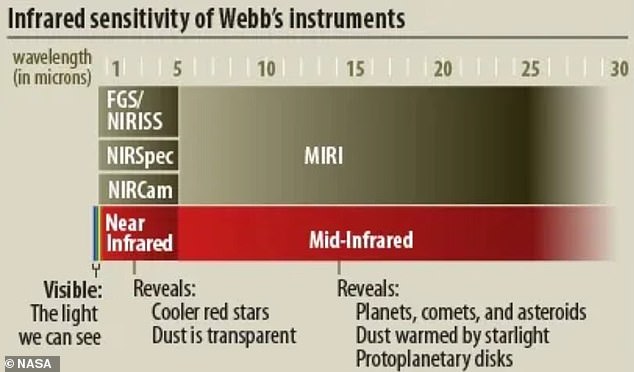NASA makes surprising discovery at the end of our universe: ‘It shouldn’t exist’
NASA’s James Webb Telescope (JWST) has made a surprising discovery at the edge of our universe that astronomers said shouldn’t exist.
The telescope captured images of three 12.8 billion year old ‘Red Monster’ galaxies, one billion years older than the Big Bang, about the size of the Milky Way.
Astronomers suggested that star formation – and thus galactic growth – in the early universe was much more efficient than previously thought, prompting experts to reconsider existing models of galaxy formation.
According to the most widely accepted cosmological model – the Lambda Cold Dark Matter (LCDM) model – these ‘Red Monster’ galaxies should not exist, researchers noted.
LCDM argues that the first galaxies to form in the universe did not have enough time to become as massive as these newly discovered galaxies appear to be.
“Finding three such enormous beasts among the monster presents a tantalizing puzzle,” said Stjn Wuyts, co-author of the study and Hiroko Sherwin Chair in Extragalactic Astronomy at the University of Bath, in a statement.
‘Many processes in galaxy evolution tend to introduce a rate-limiting step in the way gas can efficiently convert into stars, but somehow these Red Monsters seem to have cleared most of these hurdles quickly. evaded,” he added.
This isn’t the first time JWST has discovered “impossibly large” ancient galaxies, as these three are just the latest in a series of discoveries that have forced astronomers to question their understanding of early galaxy formation.
The researchers call these newly discovered galaxies ‘Red Monsters’ because of their gigantic size and high dust content, which gives them a striking red appearance in telescope images
The researchers call the three most recently discovered specimens ‘Red Monsters’ because of their gigantic size and high dust content, which gives them a striking red appearance in telescope images
Wuyts and his colleagues conducted their research as part of the JWST First Reionization Epoch Spectroscopically Complete Observations (FRESCO) study.
This program aimed to systematically analyze a complete sample of emission line galaxies (ELGs) within the first billion years after the Big Bang, the statement said.
ELGs are galaxies that exhibit strong emission lines in the light spectra they emit.
‘These emission lines appear as bright lines at specific wavelengths and stand out against the darker background of the spectrum,” the statement reads.
The researchers analyzed these emission lines to collect data on the distances of the galaxies in the sample and emission line strengths. This knowledge then allowed them to measure the number of stars in each galaxy.
Most of the galaxies they examined fit existing models. But three turned out to be surprisingly big: the Red Monsters.

JWST was able to reveal the existence of these galaxies for the first time thanks to the unique capabilities of its near-infrared camera
The researchers published their findings in the journal Nature on November 13.
Astronomers commonly believe that galaxies form within vast halos of dark matter whose gravity captures gas and forces it into gravitationally bound structures.
Normally, only 20 percent of that gas – at most – becomes stars and galaxies. That’s why it takes a long time for galaxies to reach enormous sizes.
But the Red Monsters challenge this view. For these galaxies to reach their size, they must form stars almost twice as quickly as galaxies formed later in cosmological history, the researchers concluded.
“Our findings change our understanding of galaxy formation in the early universe,” Mengyuan Xiao, lead author and postdoctoral researcher at the University of Geneva in Switzerland, said in the statement.

A JWST study published in February 2023 found six galaxies that formed just 500 to 700 million years after the Big Bang are 100 times more massive than they should be
This research adds to a growing number of galaxy observations that contradict this insight, showing that we still have much to learn about the early universe.
For example, a JWST study published in February 2023 found six galaxies that formed just 500 to 700 million years after the Big Bang are 100 times more massive than astronomers would expect.
While many experts believe that these discoveries require a reexamination of current cosmological models, others have suggested that the nonsensical observations may be optical illusions.
A study published in August argued that the presence of black holes in some of these early galaxies could have made them appear much brighter and larger than they actually were.
Getting to the bottom of this cosmological mystery will require further investigation of these anomalous galaxies through the unique capabilities of JWST.
“Just in the first few years that JWST was active, it threw us a few curveballs,” Wuyts says.
